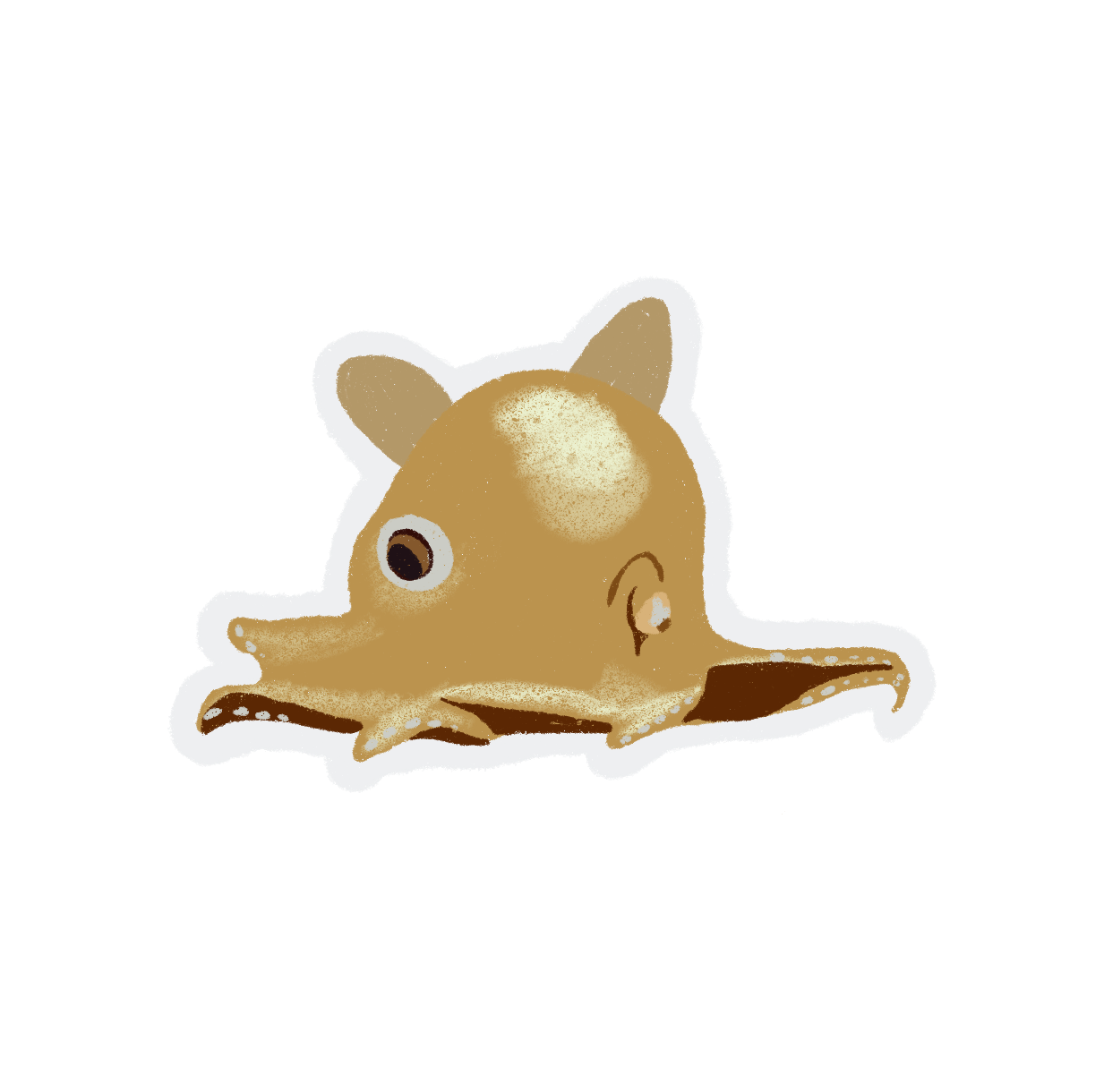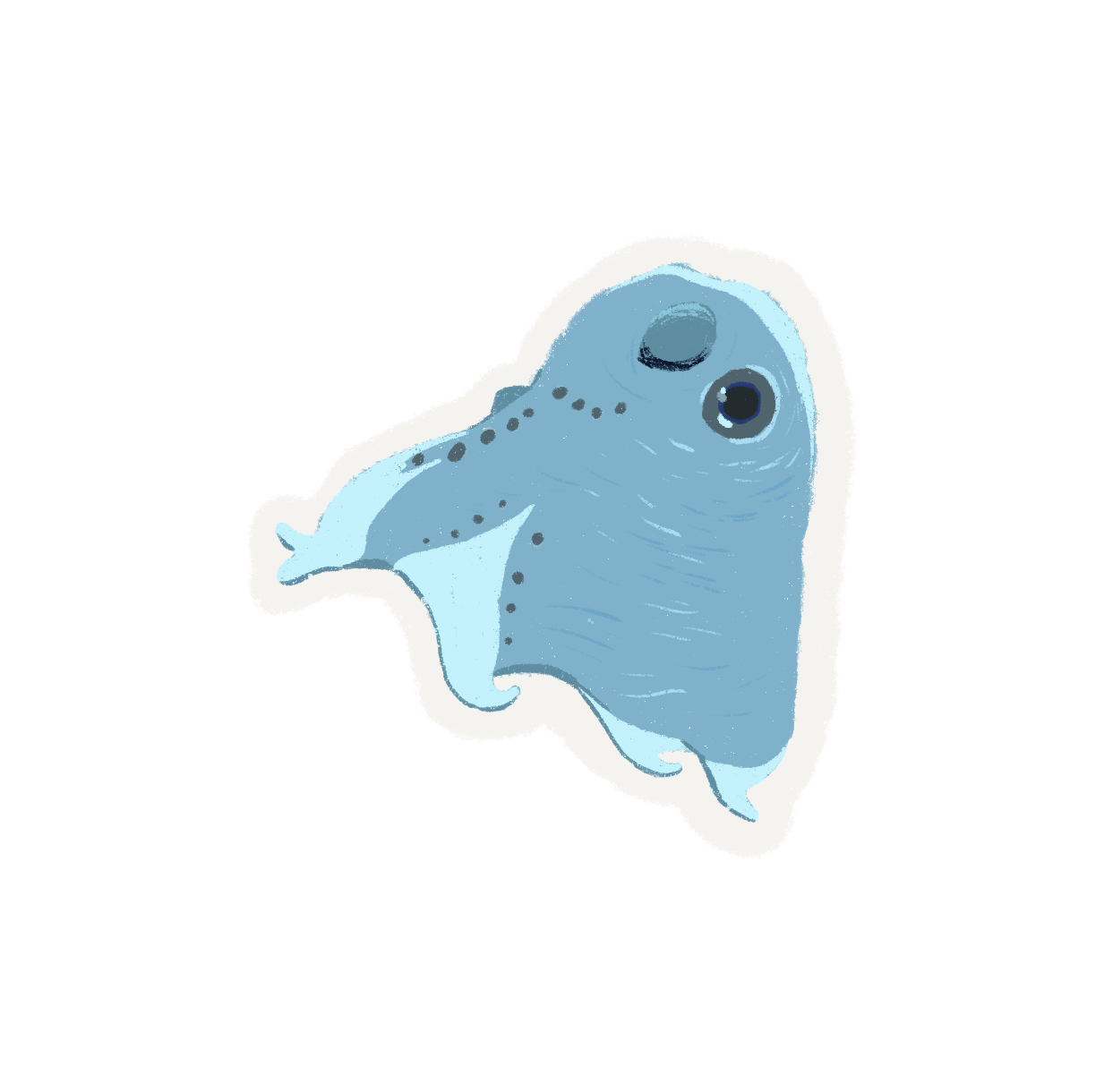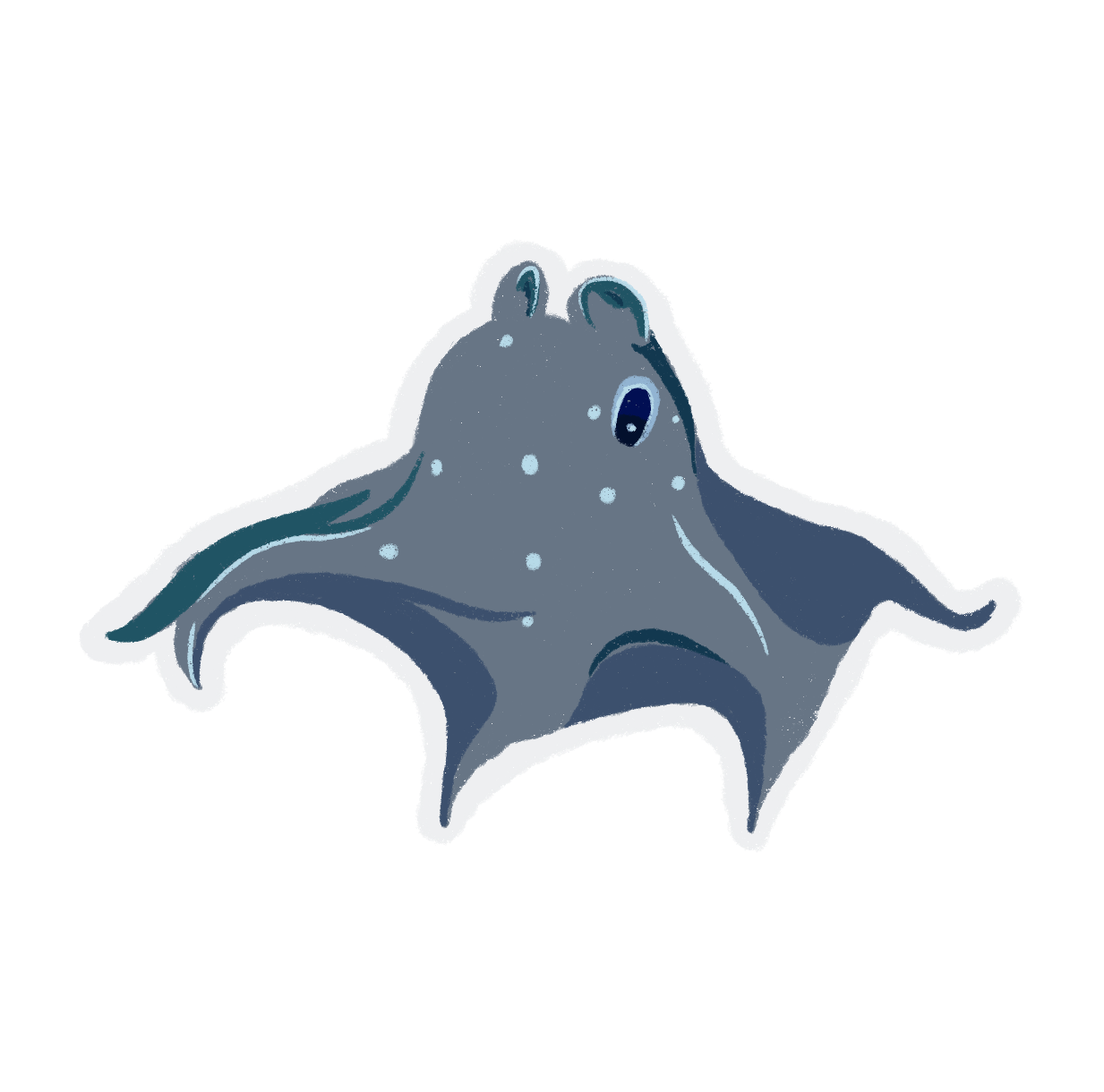Range and Habitat
Grimpoteuthis is a genus of pelagic umbrella octopuses known as the dumbo octopuses. The name "dumbo" originates from their resemblance to the title character of Disney's 1941 film Dumbo, having a prominent ear-like fin which extends from the mantle above each eye. There are 15 species recognized in the genus. Prey include crustaceans, bivalves, worms and copepods. The average life span of various Grimpoteuthis species is 3 to 5 years.

Threats
Species of Grimpoteuthis are assumed to have a worldwide distribution, living in the cold, abyssal depths ranging from 1,000 to 7,000 metres. Specimens have been found off the coast of Oregon, the Philippines, Martha's Vineyard, the Azores, New Zealand, Australia, California, Gulf of Mexico, Papua, and New Guinea.
Dumbo octopuses are the deepest living octopuses known, with some specimens captured or observed in hadal depths. One Grimpoteuthis sp. specimen was captured 60 km southeast of Grand Cayman at 7,279 m, but this depth is uncertain (as the specimen may have been captured while the net was descending to depth). However, in 2020, Grimpoteuthis was spotted 6,957 m deep in the Java Trench, confirming the hadal distribution of this genus.

Movement, characteristics, food supply
Specimens of Grimpoteuthis have been observed to swim by using movement of the fins. Although it has been suggested that species of Grimpoteuthis are capable of jet-propulsion, this has since been deemed unlikely. Movement of the arms can be used to help the animal move in any direction. Despite being thought of as a myth, the gills of the Grimpoteuthis tend to assist the organism in propelling in, or away in various directions, even if it isn't by much. In addition to the propelling, this animal can also balloon away from high intensity or stressful situations.
The arms permit the animal to crawl along the seafloor, to capture prey, lay eggs, explore, etc. Dumbos hover above the sea floor, searching for polychaete worms, pelagic copepods, isopods, amphipods, and other crustaceans for food. Prey is captured by pouncing on the target, which then is swallowed whole. In contrast to other octopuses, dumbo octopuses do not produce ink. This makes sense considering the fact that their habitat is a deep, dark place in the ocean.

Breeding
The cirrate octopuses are classified as 'continuous spawners', females carry multiple eggs in various stages of maturation and only lay one-or-two eggs at a time, with no seasonality in spawning (however most of these aspects of reproductive biology have only been confirmed in Opisthoteuthis, not Grimpoteuthis). Mating in cirrate octopuses has never been observed, and unlike other octopuses, members of Cirrata lack a hectocotylus for the transfer of sperm packets. Cirrate octopus eggs are large and have a tough casing surrounding the chorion (not found in other octopuses), and Grimpoteuthis in particular attach their eggs to deep sea corals (octocorals).[35] The female cirrate octopus does not guard or incubate the eggs (again unlike other octopuses). Grimpoteuthis hatchlings emerge as "fully competent" juveniles with all of the sensory and motor features to survive on their own.
Sexual dimorphism between males and females are less noticeable and consistent in Grimpoteuthis compared to other cirrate octopuses (such as Opisthoteuthis). In some species (e.g., G. bathynectes and G. discoveryi) the males have enlarged suckers relative to the females, but no such enlargement is found in other Grimpoteuthis species.



